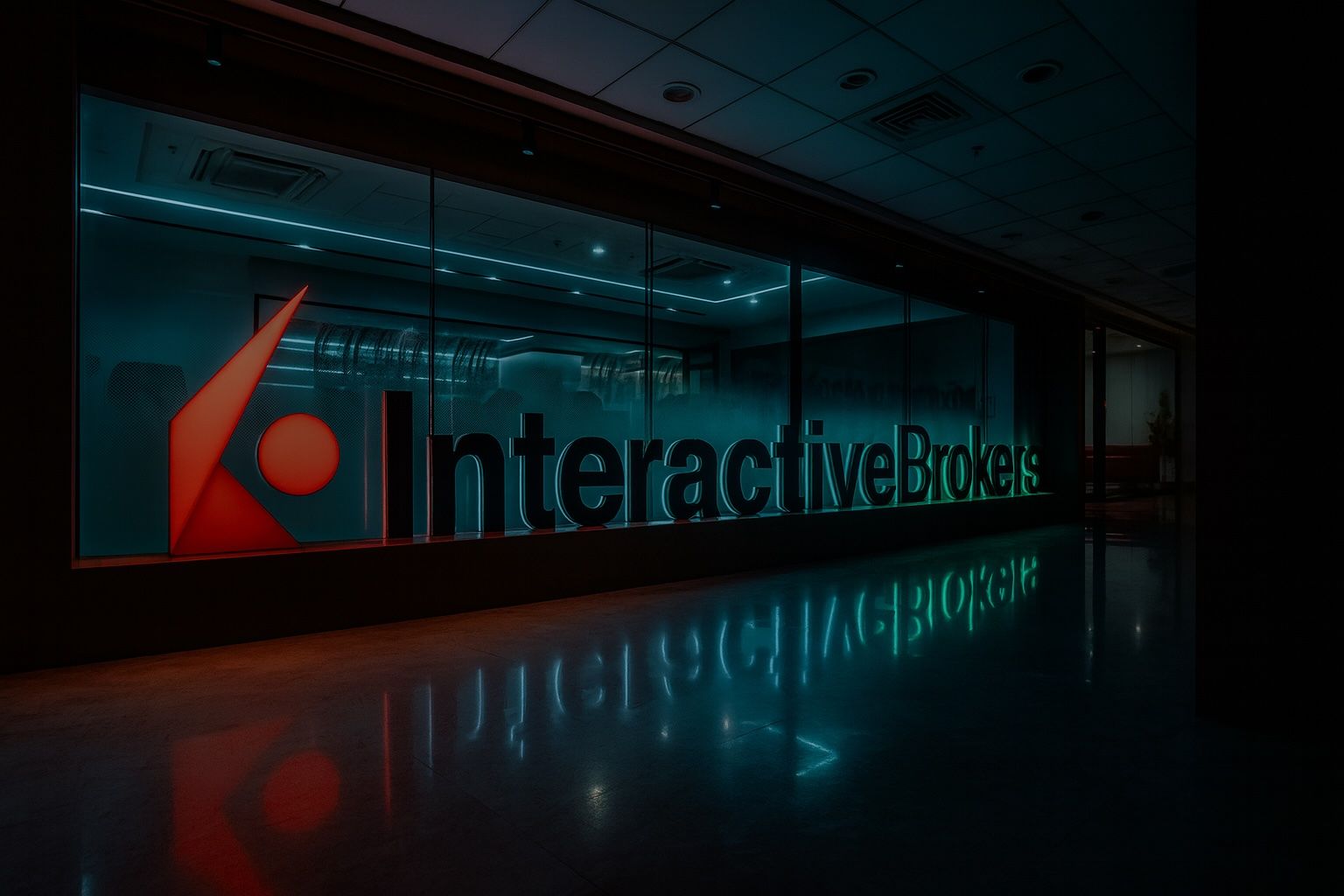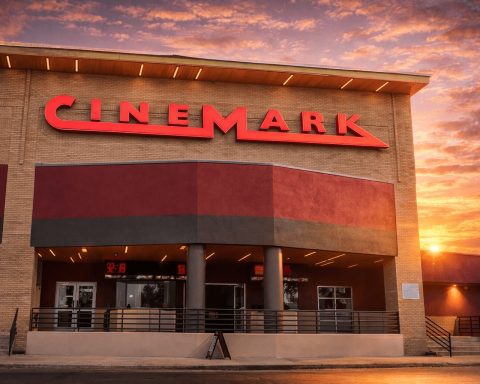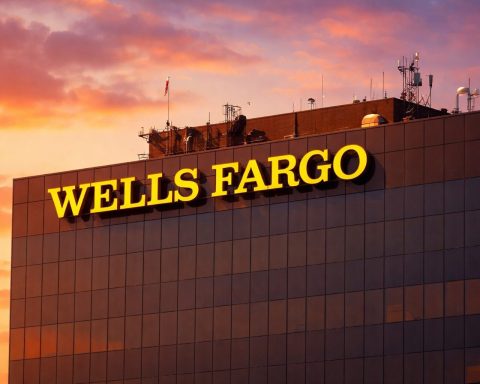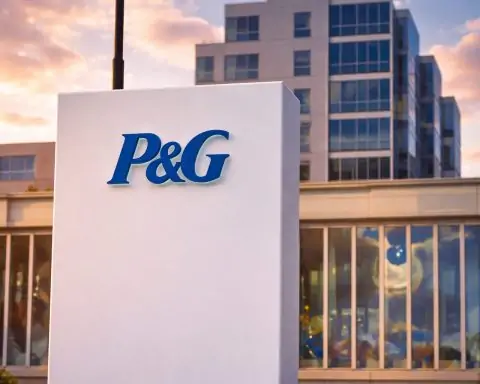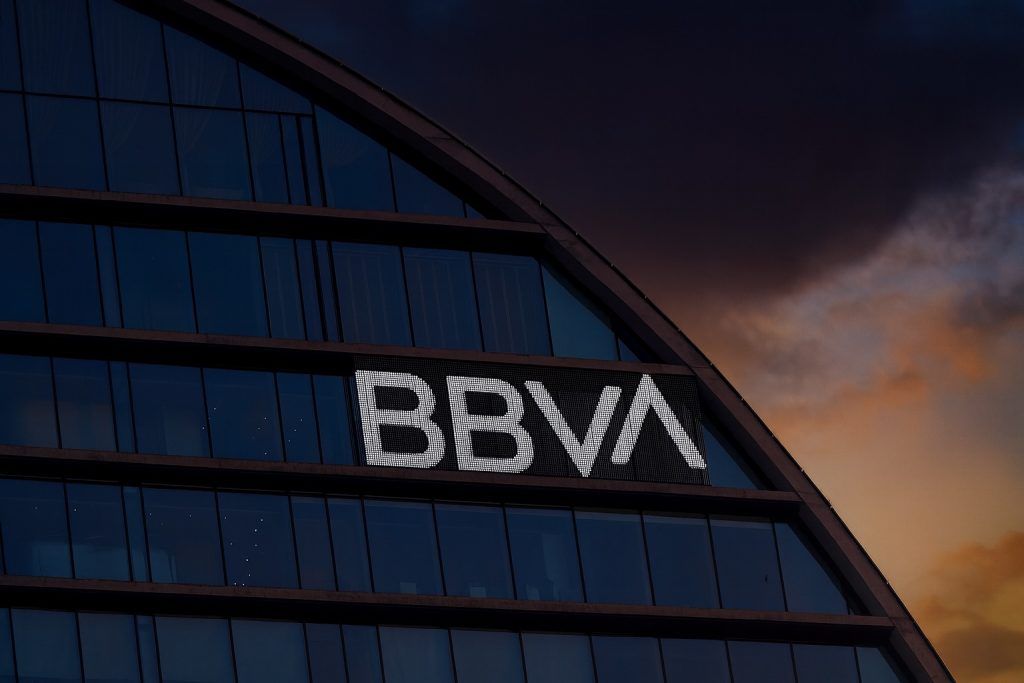Interactive Brokers Group (NASDAQ: IBKR) is making headlines after delivering standout third-quarter results on October 16, 2025, which sent its stock into focus. The online brokerage reported earnings and revenue that topped analyst expectations, fueling optimism among investors. IBKR’s shares closed at $68.52 after the earnings release – marking an impressive rise of about 83% over the past 12 months [1] (and roughly 56% year-to-date, buoyed by a 4-for-1 stock split in June 2025 [2]). Below we break down the key facts and expert insights on what’s driving Interactive Brokers’ stock and what may be next.
Key Facts
- Q3 Earnings Beat Estimates: Interactive Brokers announced Q3 2025 net revenue of $1.66 billion (up ~20% year-over-year) and adjusted EPS of $0.57, surpassing consensus estimates of ~$1.52 billion and $0.53 respectively [3]. GAAP diluted EPS came in at $0.59, up from $0.42 a year ago, and pretax profit margins expanded to 79% this quarter (vs 67% a year ago) [4] – showcasing exceptional operational efficiency.
- Strong Growth in Trading & Interest Income: Commission revenues jumped +23% YoY to $537 million on a surge in customer trading activity [5] (stock trading volumes +67% and options +27% YoY [6]). Net interest income climbed 21% to $967 million [7], bolstered by higher client margin loans and securities lending amid elevated interest rates. At the same time, strict cost control (general expenses down 59% on non-recurrence of prior legal costs) helped boost profitability [8].
- User Base & Assets Soar: The brokerage’s customer accounts swelled 32% year-over-year to 4.13 million, and client equity (assets) surged 40% to $757.5 billion [9] – indicating both more users and larger balances per client. Daily average revenue trades (DARTs) rose 34% to 3.62 million [10], reflecting heightened engagement, although DARTs per account ticked slightly lower (suggesting a mix of both active traders and more passive investors).
- Stock Price Performance:IBKR stock is trading around the mid-$60s following the results, up dramatically from year-ago levels. It closed at $68.52 on Oct. 16 [11] (down ~1.8% during that session, but up about 0.3% in late after-hours trade as investors digested the beat [12]). Year-to-date, the stock has climbed roughly 50–60%, significantly outperforming the broader market, thanks in part to robust earnings growth and a June stock split that increased share accessibility [13].
- Analysts & Outlook: Wall Street remains broadly bullish on Interactive Brokers. Most analysts rate IBKR a “Buy”, and the median 12-month price target is about $77–$78 per share – roughly 10% above the pre-earnings price [14]. Notably, Barclays recently reiterated an Overweight rating and hiked its target to $81 ahead of the results [15]. The Board declared an $0.08 quarterly dividend payable in December [16], underlining confidence in the company’s cash generation. While IBKR did not issue formal guidance, consensus expects continued growth (analysts forecast full-year 2025 revenue of ~$6.0 B and are watching if the Q3 momentum carries into Q4).
Stock Price and Market Reaction
Interactive Brokers’ strong Q3 report initially sparked a positive market reaction, with the stock jumping as much as ~3% in after-hours trading following the October 16 release [17]. This uptick reflects optimism that the broker’s earnings power is accelerating. By the next trading day, IBKR shares stabilized in the high-$60s, still near multi-year highs after a stellar run in 2025. The stock has dramatically outperformed benchmarks over the past year, thanks to tailwinds from volatile markets and higher interest rates (which boost trading and interest income for brokerages).
It’s worth noting that IBKR’s stock split (4-for-1 in June) has made its share price more accessible to retail investors [18], potentially broadening the shareholder base. Even after this year’s rally, Interactive Brokers’ valuation doesn’t appear stretched to many analysts – the stock trades around 32× forward earnings, modestly above its level a quarter ago [19], and below some fintech peers. The consensus price targets in the upper-$70s suggest room for further upside if growth continues as expected.
Broader investor sentiment toward online brokers is upbeat. Industry-wide, trading activity has been elevated, and companies like IBKR that benefit from interest on client cash are seeing a profit windfall. That said, there was a hint of volatility around the earnings: IBKR’s stock fell slightly into the close on Oct. 16 (perhaps on profit-taking or market jitters) before rebounding. Overall, the market reaction has been positive, with the strong results reinforcing the view that Interactive Brokers is a winner in the current environment.
Q3 2025 Earnings Highlights
Interactive Brokers’ latest results underscore a booming business. Revenue grew 20%+ year-on-year to $1.65 B [20], driven by record trading volumes and interest income. The firm’s adjusted EPS of $0.57 beat estimates by a healthy margin [21], and was about 42% higher than the year-ago EPS ($0.40 adjusted, split-adjusted [22]). Net income jumped to $1.19 B for Q3 [23], reflecting both the top-line growth and significantly lower operating expenses.
A few key drivers stand out from the earnings report:
- Trading Commissions: As active trading surged, IBKR’s commission revenue rose 23% YoY to $537 million [24]. Notably, stock trading volumes leapt 67% (options trades +27%), highlighting IBKR’s strength with active traders and institutional clients. The company noted that its market share in equities trading has been rising, aided by its ultra-low fees and superior execution. With 3.62 million trades per day on average [25], Interactive Brokers is handling record activity on its platforms. This is especially impressive given that some rivals have seen trading level off; IBKR appears to be capturing flow from less efficient brokers.
- Net Interest Income: Interactive Brokers also profited from the interest rate environment. Net interest income (NII) jumped 21% to $967 million [26]. The broker earns NII by investing customer cash and lending securities/margin loans. Clients’ margin borrowing grew 39% to $77.3 B, and customer credit balances (uninvested cash) climbed 33% to $154.8 B [27] [28]. Higher balances, combined with still-elevated short-term rates, acted as a powerful earnings engine. Management noted particularly strong securities lending activity (benefiting from demand to borrow stocks) [29]. However, they also pointed out that net interest margins have begun to compress slightly as rates stabilize [30] [31] – a trend to watch if central banks ease policy in 2026.
- Expense Discipline: A major highlight was IBKR’s operating efficiency. Expenses actually fell year-over-year – a rarity in this inflationary environment. Total non-interest costs were down 25%, with general and administrative (G&A) expenses plummeting 59% [32]. This is largely because the year-ago quarter included an $88 M one-time legal expense and costs for European subsidiary consolidation [33] that didn’t recur. Even excluding one-offs, IBKR kept expense growth very modest. The platform’s high degree of automation helps keep costs low even as volumes grow. The result was a jaw-dropping pretax profit margin of 79% [34] – extremely high for the industry and up sharply from 66–67% a year prior. In short, Interactive Brokers is scaling up profits faster than expenses, a very positive sign.
- Client Growth: The quarter also showcased continued client growth and engagement. IBKR ended Q3 with 4.13 million customer accounts (+32% YoY) [35], adding over 250,000 net new accounts during Q3 alone. Clients brought more assets into the platform – customer equity hit $757.5 B (+40% YoY) [36], an all-time high. This indicates existing clients are growing their portfolios (perhaps due to market gains and new deposits) and new clients are joining in droves. The company’s metrics suggest those clients are active: while average trades per account dipped slightly, total trades soared, and customer margin loans and balances hit record levels [37] [38]. All of this paints a picture of a brokerage that is both widening and deepening its customer base – gaining more users and seeing higher engagement from them.
Interactive Brokers’ CEO (Thomas Peterffy) noted that the firm’s focus on technology and global markets continues to attract sophisticated traders worldwide. The company’s decades-long investment in automation and superior execution is paying off in the form of loyal clients and robust trade volumes. Additionally, IBKR’s expanding product offerings (from stocks and options to futures, forex, bonds, and more) and new tools (like fractional shares and advanced order types) are keeping existing customers engaged. No single segment is driving the growth – it’s broad-based across trading and interest income – a sign of a balanced, resilient business model.
Analyst and Expert Analysis
Wall Street analysts and industry experts have been quick to weigh in on Interactive Brokers’ stellar quarter. The consensus is positive: IBKR is increasingly seen as a “must-own” stock in the brokerage space due to its strong growth and technological edge. Here are some key perspectives:
- Analyst Upgrades: In the days surrounding the earnings, several analysts reiterated bullish views. For example, Barclays analyst Benjamin Budish raised his price target from $73 to $81 (Overweight rating) just ahead of the results [39], citing confidence in Interactive Brokers’ growth trajectory. BMO Capital initiated coverage in early October with an Outperform and $82 target [40]. The median Wall Street target now sits around $77.50 [41], implying upside from current levels, and no major firm recommends selling [42]. Analysts highlight IBKR’s unique position as both a beneficiary of higher rates and a fast-growing trading platform – a combination that is yielding superior earnings growth.
- “Quiet Giant” in Brokerage: Some market commentators have dubbed IBKR the “silent” or “quiet giant” of online brokers, quietly bulking up while others chase flashier trends [43]. Miles Torrington, a contributor at Financhle, noted that Interactive Brokers’ Q3 was a “masterclass in how a brokerage can thrive amid volatile markets,” calling the company “the quiet giant that’s been bulking up while others chase flashy trends” [44]. Unlike zero-commission app-based rivals that often make headlines, IBKR has steadily grown its user base and profits without as much fanfare – focusing on automation, global access, and low costs as its competitive advantages.
- Global & Institutional Edge: Experts also underscore Interactive Brokers’ global reach and sophisticated client base as key strengths. The company operates on 160+ markets across 36 countries and supports trading in 28 currencies [45], catering to hedge funds, prop traders, and active individuals around the world. Over 80% of IBKR’s accounts are held by clients outside the U.S. [46] – a testament to its international appeal. This global footprint not only diversifies revenue, it positions IBKR to capture growth in emerging markets and from trends like the rise of international retail investing. In contrast, many competitors (e.g. Robinhood) are more U.S.-centric. “Interactive Brokers is basically the global standard for serious traders,” one market strategist commented, noting that its ultra-low margin rates and superior trade executions “attract a more sophisticated crowd,” which in turn leads to high trading volumes and asset balances.
- Investor Sentiment: Investor forums and sentiment indicators also turned bullish post-earnings. According to Investing.com data, IBKR saw only positive EPS revisions (8 up, 0 down) in the 90 days ahead of earnings [47] – indicating analysts were increasingly optimistic. The strong Q3 likely reinforces this trend. GuruFocus reports that analyst recommendations remain “generally positive,” with an average target around $75–$78 and consensus Buy rating [48] [49]. Some technical analysts point out the stock recently hit a 52-week high and has strong momentum, though its valuation metrics (price-to-earnings, etc.) have risen accordingly [50]. Still, many experts say the premium is justified by IBKR’s growth. “If the company keeps executing like this, we’ll continue to see upside,” summed up one financial blogger, who also noted IBKR’s fortress balance sheet (zero debt) and high return on equity as support for a higher share price.
Amid the praise, a few cautionary notes were raised. Bears argue that a prolonged market downturn or rapid decline in interest rates could test IBKR’s earnings. For instance, if trading activity slows in calmer markets, commission revenue could plateau. Additionally, Interactive Brokers’ net interest margins could compress if benchmark rates fall significantly (since the firm would earn less on customer cash). Competitive pressure is another theme: the brokerage industry has fierce rivals, from traditional players like Charles Schwab and Fidelity to fintech disruptors like Robinhood. Any price wars on commissions or interest (for example, competitors raising the interest they pay on client cash) could require IBKR to respond. However, so far IBKR has managed to stay ahead of competitors via technology and global diversification. Even acknowledging these risks, the overall expert view post-Q3 is that Interactive Brokers has a solid lead in the online brokerage race.
Platform Innovations and Industry Context
Interactive Brokers’ robust performance comes amid a rapidly evolving online brokerage landscape. The company has been rolling out new features and platform improvements, keeping it at the cutting edge of the industry:
- AI-Powered Tools: On October 15 (just before earnings), IBKR announced the launch of “Ask IBKR,” an AI-driven portfolio insight tool [51]. This feature allows clients to ask natural-language questions about their portfolio and trading (for example, “What is my exposure to tech stocks?”) and receive instant analytics. It’s built on generative AI, aiming to make IBKR’s advanced platform more user-friendly. The introduction of Ask IBKR highlights how the company is leveraging artificial intelligence to enhance customer experience – a trend across finance. Executives have hinted that this is just the beginning of IBKR’s AI integration, with potential future uses in trade recommendations or risk management tools.
- 24/7 Global Trading: Interactive Brokers has also capitalized on its global reach by offering 24/7 trading access to many markets. Uniquely, IBKR now provides around-the-clock trading on 10,000+ U.S. and international securities [52], including overnight trading hours for U.S. stocks. This appeals to investors in Asia and Europe who want to trade U.S. equities in their daytime, and to any trader who wants to react to news in off-hours. The push toward 24/7 trading (with IBKR expanding the roster of assets available in that window) is seen as a significant innovation, potentially foreshadowing what mainstream markets may adopt in the future.
- Competitive Differentiators: Unlike app-only brokers that focus on simplicity, IBKR’s strategy is to offer a comprehensive, professional-grade platform. Clients can trade stocks, options, futures, forex, bonds, and even new instruments like crypto and fractional shares (through regulated offerings) all from one account. The platform’s advanced capabilities (like algorithmic order types, margin lending, and direct market access to 150+ exchanges) cater to serious investors. This breadth and sophistication have helped IBKR carve out a lucrative niche. As TS2.tech noted, IBKR’s highly automated, low-cost platform with global reach positions it as a core player to “anchor a 2026 rally” for proactive investors [53] – underlining its role as a backbone for many market participants.
- Innovation vs. Disruption: The broader industry context in 2025 has seen both incumbent brokers and upstarts thriving. For example, Robinhood Markets – a popular commission-free broker – saw its stock skyrocket over 200% year-to-date in 2025 amid a retail trading boom [54] and its inclusion in the S&P 500 index. Robinhood has been expanding into new products like crypto trading and even banking services. However, Robinhood’s meteoric rise also comes with volatility and regulatory scrutiny (the stock plunged 9% in one day on Oct. 10 [55], and the company has faced fines for outages and compliance issues [56]). In contrast, Interactive Brokers has taken a more steady approach: it quietly keeps adding products (for instance, launching cryptocurrency trading for institutional clients and new international account types) but with a strong emphasis on regulatory compliance and reliability. This difference in approach – flashy growth vs. steady, tech-driven expansion – defines the competition in the online brokerage space. IBKR’s Q3 results suggest that its model is highly effective, as it manages to grow rapidly and profitably.
- Peers’ Performance: The strength of Interactive Brokers’ quarter is part of a larger trend of brokerage firms thriving in 2025. Just days earlier, Charles Schwab (SCHW) reported a blowout Q3 with record revenue and EPS, sending its stock higher [57] [58]. Schwab’s management cited “favorable macroeconomic tailwinds” and strong organic asset growth – themes that echo IBKR’s experience. Meanwhile, Morgan Stanley’s wealth management division (which includes E*Trade) posted double-digit growth in Q3 fee income [59], and other financial brokers are seeing upticks in client activity. Fed policy and macro conditions have played a role: for much of 2025, rising interest rates increased brokers’ income on client cash, and market volatility (from AI stock rallies to geopolitical events) kept traders busy. Notably, Fed Chair Jerome Powell’s speech on Oct. 14 caused bond yields to pull back (10-year U.S. Treasury yield down to ~4.02% [60]), relieving some pressure on markets and providing a more positive backdrop for interest-rate-sensitive businesses like brokers. This confluence of factors – high client engagement, ample cash balances, and decent economic conditions – has created something of a golden moment for firms like IBKR.
In terms of regulatory landscape, Interactive Brokers has not been in the crosshairs as much as some peers. Earlier in the year, Robinhood paid a hefty fine for various compliance issues [61], whereas IBKR’s major regulatory matters (such as a past AML fine in 2020) are well behind it. In Q3, IBKR actually benefited from lower regulatory fees – the SEC eliminated certain transaction fees in 2025, reducing IBKR’s costs by tens of millions [62]. The company’s long-standing conservative approach to compliance seems to be paying off, with no new regulatory hiccups noted this quarter.
Outlook: Future Catalysts and Risks
Looking ahead, Interactive Brokers appears well-positioned to sustain its growth, though there are a few factors to monitor:
- Earnings Trajectory: With three quarters of 2025 in the books, IBKR’s year-to-date revenues are up ~20% and pretax profits up even more [63]. If market conditions remain conducive, the company is on track for record full-year results. Analysts currently project around $6.0–6.1 B in 2025 revenue and further earnings gains in 2026 [64]. The key will be whether the trading boom persists. Many experts believe that secular trends – like the rise of algorithmic trading, global retail investor participation, and interest in options/derivatives – will keep volumes healthy. Additionally, IBKR’s expanding client base (32% account growth) means even normalizing per-account activity could be offset by having many more customers than a year ago.
- Interest Rate Changes: A potential headwind is the interest rate cycle. Interactive Brokers has greatly benefited from higher short-term rates (which currently hover around multi-year highs). If the Federal Reserve or other central banks start cutting rates in 2026, IBKR’s net interest income growth could slow or reverse. The Q3 results did show net interest margin ticking down slightly [65] as certain yields on assets (like segregated cash) fell from a quarter ago. Management has indicated that while they can’t control rates, they have other levers, such as increasing client balances and optimizing their currency diversification strategy (IBKR holds capital in a mix of global currencies to mitigate dollar fluctuations [66]). Bottom line: a gradual decline in rates might modestly reduce earnings, but a sharp rate drop could pose a more significant challenge to IBKR’s interest-driven income.
- Market Conditions:Macro volatility has been a friend to brokers in 2025. If markets enter a calmer phase (or a prolonged bear market), trading activity could taper. For now, many investors remain engaged – the AI-led rally in tech stocks, continued IPOs, and even geopolitical swings have all kept volumes flowing. IBKR’s diverse product set (including futures and forex) means it can even benefit when stocks are quiet but other markets are moving. Nonetheless, a severe downturn or investor pullback (for instance, due to a recession) could slow new account growth and reduce trading, at least temporarily. Notably, IBKR’s risk controls and conservative margin policies might prove advantageous if a downturn comes; the firm has historically had very low bad debt even in market crises (Q3 actually saw a net recovery of $2 M in bad debts [67], indicating clients are generally not blowing up their accounts).
- Competition and Innovations: Interactive Brokers will need to continue innovating as competitors aren’t standing still. Robinhood’s push into higher-yield cash accounts and crypto offerings targets a younger demographic, while Schwab and others are upping their tech game for active traders. IBKR’s response has been to keep enriching its platform (e.g., the new AI tools, broader crypto trading via Paxos, and even offering fractional shares of international stocks, a unique feature). The company is also eyeing expansion into new markets – for example, earlier this year IBKR launched services in Ireland and expanded in the Middle East. Analysts believe IBKR’s technology focus gives it a cost advantage – one that it can pass on to clients via better prices and interest paid on idle cash, helping retain and win customers. The Q3 report showed a slight uptick in marketing spend (an extra $10 M on advertising) [68], signaling IBKR is pushing to capture even more market share. This could hint at upcoming promotions or products aimed at segments like younger traders or financial advisors.
- Investor Takeaway: Right now, investor sentiment is largely positive on IBKR’s prospects. As TS2.tech’s market commentary suggested, the stage may be set for brokers like Interactive Brokers to lead in the next market rally [69]. The company’s combination of scale, efficiency, and global reach gives it multiple avenues to grow. As long as markets don’t “hibernate” (in the words of one analyst [70]), Interactive Brokers looks poised to continue its robust performance. It’s telling that IBKR’s management, known for being cautious, felt confident enough to maintain dividends and invest in new tech during this boom – indicating they see these gains as durable.
Conclusion: Interactive Brokers Group has emerged as a big winner of late, deftly navigating 2025’s market landscape. The October 16 earnings release showcased blockbuster growth in trading and assets, validating the company’s tech-driven, globally diversified business model. With its stock near highs and analysts upbeat, IBKR is squarely on the radar of investors seeking exposure to the financial sector’s bright spots. Risks like rate changes and competition bear watching, but for now Interactive Brokers is riding a wave of momentum – one that reflects both its own execution and the broader enthusiasm for market participation. If the company can maintain this pace of customer and profit growth, IBKR stock may continue to be a top pick in the online brokerage space, appealing to bulls who believe in the democratization and digitization of trading worldwide.
Sources: Key financial results from Interactive Brokers’ Q3 2025 earnings release [71] [72] and analyst reports [73] [74]; stock price and performance data from Investing.com [75] and TS2.tech [76]; growth metrics from company press release [77]; industry context and competitor info from TS2.tech and Benzinga [78] [79]; expert commentary from Financhle and GuruFocus [80] [81]. All information is as of Oct. 16–17, 2025.
References
1. www.investing.com, 2. ts2.tech, 3. www.investing.com, 4. www.chartmill.com, 5. www.investing.com, 6. www.investing.com, 7. www.investing.com, 8. www.businesswire.com, 9. www.chartmill.com, 10. www.chartmill.com, 11. www.investing.com, 12. www.gurufocus.com, 13. ts2.tech, 14. www.tradingview.com, 15. www.benzinga.com, 16. www.tradingview.com, 17. www.gurufocus.com, 18. ts2.tech, 19. www.tradingview.com, 20. www.gurufocus.com, 21. www.investing.com, 22. www.businesswire.com, 23. www.tradingview.com, 24. www.investing.com, 25. www.chartmill.com, 26. www.investing.com, 27. www.businesswire.com, 28. www.businesswire.com, 29. www.investing.com, 30. financhle.com, 31. financhle.com, 32. www.businesswire.com, 33. www.businesswire.com, 34. www.chartmill.com, 35. www.chartmill.com, 36. www.chartmill.com, 37. www.businesswire.com, 38. www.businesswire.com, 39. www.benzinga.com, 40. www.benzinga.com, 41. www.tradingview.com, 42. www.tradingview.com, 43. financhle.com, 44. financhle.com, 45. www.gurufocus.com, 46. www.gurufocus.com, 47. www.investing.com, 48. www.gurufocus.com, 49. www.tradingview.com, 50. www.tradingview.com, 51. www.benzinga.com, 52. ts2.tech, 53. ts2.tech, 54. ts2.tech, 55. ts2.tech, 56. ts2.tech, 57. ts2.tech, 58. ts2.tech, 59. ts2.tech, 60. ts2.tech, 61. ts2.tech, 62. www.businesswire.com, 63. financhle.com, 64. www.chartmill.com, 65. financhle.com, 66. www.businesswire.com, 67. www.businesswire.com, 68. www.businesswire.com, 69. ts2.tech, 70. financhle.com, 71. www.businesswire.com, 72. www.businesswire.com, 73. www.investing.com, 74. www.tradingview.com, 75. www.investing.com, 76. ts2.tech, 77. www.chartmill.com, 78. ts2.tech, 79. ts2.tech, 80. financhle.com, 81. www.gurufocus.com
